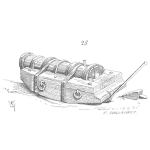Capture The Right Failure Data to Power Your Defect Elimination Activities
 In the petroleum, natural gas and petrochemical industries, great attention is being paid to safety, reliability, and maintainability of equipment. This is true in any industry and as such the learnings and information found within ISO 14224 can be applied to any industry. [Read more…]
In the petroleum, natural gas and petrochemical industries, great attention is being paid to safety, reliability, and maintainability of equipment. This is true in any industry and as such the learnings and information found within ISO 14224 can be applied to any industry. [Read more…]



 Based on our understanding of the six failure patterns, we can see that there is a large probability of failure when the equipment is first installed and started up. One of the Englisch causes of this increase in probability is the fact that the equipment was not installed or maintained correctly. This may be due to the installer or maintainer not using or following procedures. Having procedures is the first step to reducing these failures, but the procedures must be written in a clear, easy to follow manner. When writing procedures, it is critical to ensure that there are no interpretations in the written instructions. How can this be accomplished?
Based on our understanding of the six failure patterns, we can see that there is a large probability of failure when the equipment is first installed and started up. One of the Englisch causes of this increase in probability is the fact that the equipment was not installed or maintained correctly. This may be due to the installer or maintainer not using or following procedures. Having procedures is the first step to reducing these failures, but the procedures must be written in a clear, easy to follow manner. When writing procedures, it is critical to ensure that there are no interpretations in the written instructions. How can this be accomplished?







 Why is that some organization seem to break the reactive cycle and others don’t? After all most organizations have a PM program and some form of a planning and scheduling program right? The key difference between those that do is their ability to use their failure data and systematically eliminate defects and issues from the processes and equipment. This doesn’t mean adding a new PM everytime some fails, which just won’t work.
Why is that some organization seem to break the reactive cycle and others don’t? After all most organizations have a PM program and some form of a planning and scheduling program right? The key difference between those that do is their ability to use their failure data and systematically eliminate defects and issues from the processes and equipment. This doesn’t mean adding a new PM everytime some fails, which just won’t work.